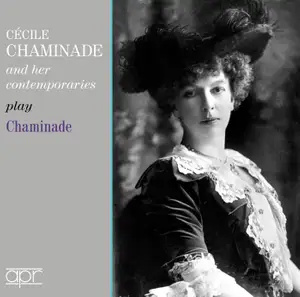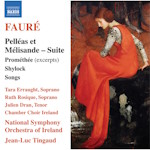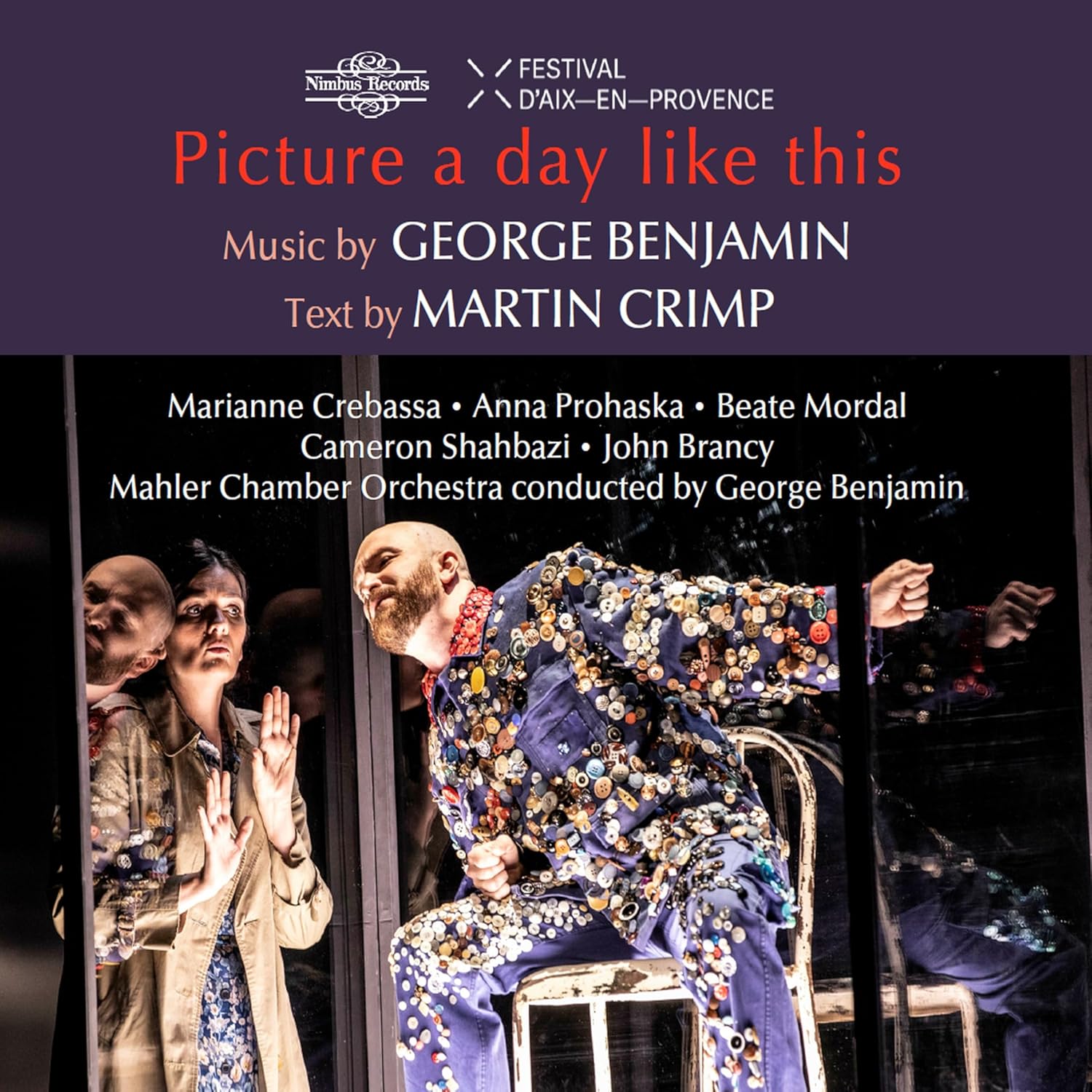
Cécile Chaminade (1857-1944)
Cécile Chaminade and her contemporaries play Chaminade
rec. 1901-1950
APR 5647 [82]
I knew that the music of Chaminade was popular in the early years of the 20th Century but to read in Jeremy Nicholas’s informative booklet that she was the first female recipient of the Légion d’Honneur, advertised a brand of soap…inspired a new line of confectionery (Chocolats Chaminade) is a real eye-opener. That she also inspired over 200 Chaminade Clubs in the United States begins to suggest something of the kind of adoration that Paderewski received. Alas her fame wasn’t to last; the sober musical world turned away from romanticism in general and Chaminade, like many composers, fell by the wayside and is still awaiting a proper revival. The Chaminade clubs suffered the same fate but it is heartening to hear that five, those in New York, Fayetteville, North Carolina, Attleboro, Massachusetts, Jackson, Mississippi and Providence, Rhode Island still survive. I even notice some Chaminade on the Jackson programs…ok, only the Scarf Dance and Interlude op.152 over two seasons but its something.
Cécile Louise Stephanie Chaminade was born into an affluent family and was surrounded by music from an early age and though her father insisted she did not attend the conservatoire – it just wasn’t done – he nonetheless provided her with the very best teachers, Félix La Couppey for piano and Benjamin Godard for composition amongst them. A recital of her own compositions at her home attracted the musical elite and her career took off from there. It is interesting to note that throughout her career she only performed her own compositions, surely one of the few performer composers of any note to do so.
On this disc APR have lovingly brought together 28 of her compositions recorded between 1901 and 1950 and including at least one version of every piece recorded on 78rpm discs during that nearly half century, a discography that began with the seven pieces that Chaminade herself recorded in London in November 1901. These really are little treasures; Chaminade is almost French pianism personified with her swift tempo, dazzling fingerwork and light touch, clear even through the hiss of these early discs. The restorations are very good and there is a lot of detail to hear. Chaminade, like her friend Una Bourne who we hear later in this recital, was fond of fast tempi and in the toccata-like Courante she just about exceeds her already high metronome marking; I think many other composers would have written presto here rather than the allegro that Chaminade indicates. She isn’t just fingers of course and has a wonderful singing line in la Lisonjera or les Sylvains to balance, in the latter, the sparkle of the latter’s elfin centre. Several pieces have capriccio written somewhere in their markings but Chaminade brings a light-hearted caprice to pretty much all of her playing and it is notable that pianists who repeated her repertoire – William Murdoch in the Danse créole or Hans Barth in la Lisonjera for example – are generally a wee bit more restrained; there really is a jaunty swagger to her playing. I wondered why Chaminade recorded no more after these 1901 discs considering she lived until 1944 but the booklet points out that by the time the recording process was improved Chaminade was retreating from performing and after the First World War she became something of a recluse. Despite living to the age of 87 her last years were plagued with ill health.
As to the rest of the company here it is partly a who’s who of pianists with several that are just plain who? The disc continues chronologically, occasionally by-passing along the way more familiar names like Leopold Godowsky, who is available elsewhere or Alfred Grünfeld, who unfortunately isn’t and arrives at Lilian Bryant who recorded three pieces by Chaminade and is represented by the seldom heard Toccata. Bryant was a pianist, conductor and accompanist who worked with singers George Baker and John McCormack amongst many others and was in at the birth of recording in the 1890s. She is sprightly and clear fingered in this dazzling little miniature. Una Bourne has already been served well by APR with a packed two CD set containing a good percentage of her many recordings (APR6037 review ~ review) five of which are Chaminade solos. I am delighted to welcome nearly all the remaining sides; apart from the Air de Ballet op.30 and two versions of the Scarf dance the only missing discs are repeats of repertoire that are found here or on APR6037. She had studied briefly with Chaminade and they became friends; I assume they met during the eighteen months that Bourne spent touring Europe after her initial studies with Benno Schrek. The recordings here are characterised by the same vibrancy and brilliance that she displays on the earlier set, more successful in faster numbers certainly – the étude romantique is wonderful – but she makes an impression in the slower numbers too and finds a grace in the three waltzes. The lilting Nocturne op.165 is rather fast, more like a barcarolle than ever, but still delicately played and there is a lovely simplicity to the Aubade, another rarity. Another Australian, William Murdoch has been represented by APR as well (APR6029 review) though this concentrated on his Electric solos for Columbia; he also made many acoustic discs including six Chaminade solos in 1917. APR have selected the Danse créole and the D major Sérénade which I hadn’t heard before. In the Danse créole he is a little more sober than Chaminade but also gives the piece more breathing space and buoyancy and his performance of the sérénade is poised and utterly touching; the fact that the piano melody occasionally sounds like a guitar is no bad thing – definitely a highlight of the disc for me and makes me want to hear more of his early discs. Rudolph Ganz is another who I’ve long wanted to hear more of; though I have mostly heard later broadcast recordings such as his Beethoven C Minor concerto when he was in his mid eighties there is a youtube Liszt Liebestraume that really impressed me. His 1917 sessions included the popular Pas des écharpes, the scarf dance, and once again it is more gently paced than Chaminade’s version though very elegant; the booklet includes a paragraph written by Chaminade for The Étude magazine in 1908 outlining how to play the Scarf dance and I have to say Ganz is perhaps closer. He contrasts the two themes, bringing the violin sonority to the opening theme and adding a touch of staccato to its answering bars and he includes the pas du voile, theveil dance interlude which many pianists, including Chaminade and Godowsky, omit.
Moving into the 1920s and we hear Gertrude Meller, another pianist who has faded almost completely from view. Born in Bedford, she studied with Francesco Berger, a pupil of Ignaz Moscheles and went on to accompany Dame Clara Butt and play at least once at the Henry Wood Proms, in 1906 playing once popular Rubinstein’s D minor concerto. She made many recordings for Homochord including many of the usual suspects but venturing into Arensky, Friml, Moszkowski and even a piece by her teacher alongside four Chaminade items of which we hear the Air de Ballet op.30. She is pretty free and easy with the rhythm, this is not anything a dancer could follow and she adds the odd extra note at cadences but is clearly enjoying herself. I only have one other disc of hers in my collection, a drastically cut Chopin Polonaise op.22 (care of Sakuraphon SKRP78011 a CD with the apt title of Great Chopinzees) but I hope that someone decides to release more of this quirky pianist. Marie Novello is a little better known despite the fact that she died of cancer in 1928 at the relatively young age of 44. She was adopted by her piano teacher Clara Novello Davies who was Ivor Novello’s mother and went on to study with Theodor Leschetizky. She made quite a few recordings and even managed a concerto amongst them, Mendelssohn’s G minor under Jospeh Batten. Her pas des amphores, like several items here from Chaminade’s very successful (once upon a time) ballet Callirhöe, is very tasteful and elegant, quite a far cry from Meller’s abandon. Max Darewski is a completely new name to me. Another early death, he was only 35 when he died the year after Novello, he was born in Manchester and had a career as a prodigy touring Europe and even conducted one of his own compositions at the tender age of nine. Again I made a little side trip to APR’s extremely useful online catalogue of 78rpm disc by classical pianists that shows he recorded six works by Chaminade; Fileuse from his six études op.35 shows that he was a fluid and supple pianist with a good sense of rubato. Arlequine was a popular choice at the time though I had not heard it before; Darewski captures its cheeky playfulness well. Another of the études, the scherzo that opens the op.35 set, is played by Maurice Cole, a London born pianist who studied with Liszt pupil Arthur de Greef and others. His recording career ran from the 1920s to the 1960s when he recorded Bach, Beethoven, Brahms, Schumann and Franck and we are told that he was the first pianist to broadcast a piano recital on the BBC. He gives a wonderfully effervescent performance of this delightful étude – what other treasures lurk in his extensive discography? I had not heard of Hans Barth until I reviewed a set of recordings by Aline von Barentzen who studied with him. He was a Reinecke pupil and went on to be be an American citizen and composed a quarter-tone concerto for piano and strings. La Lisonjera is far from that sound world but Barth plays it evocatively, quite a bit slower than Chaminade though it means he has more room for contrast between the different sections. Chaminade says in order to give a good rendering the movement of the piece should not be too languid. I considered at first that he was but I think he gets it right; if anything it is Chaminade who is too fast though I hesitate to argue with the composer. Two final names are heard more often and begin to bring us up to date. Mark Hambourg was an inveterate recording artist with mixed results; seldom dull and often inspired but he could be thump with the best of them and be rather charmless. His 1930 Automne – he made an earlier recording in 1926 – is actually quite charming and lyrical and adds grand passion and drama into the mix. It is also by far and away an improvement on his 1926 version that crashes through the middle section like the proverbial retail-challenged bull, all heavy-handed playing and wrong rhythms.
This was in 1930 and the booklet suggests that no more Chaminade was recorded until the late, lamented Shura Cherkassky recorded his beautifully nostalgic Autrefois in 1950, the final item on this marvellous CD. If I were to be a little picky APR’s catalogue does list two items, Automne and Danse Créole recorded in 1934 by one Adelaide Newman, winner, aged 14, of the Pip, Squeak and Wilfred music competition no less but it feels churlish to mention this when presented with such a wealth of gems, gorgeously presented and researched. You may have got the idea that this compilation has me wishing for more (please) but that is only because it is so enjoyable and I hope it goes some way to shining more light on this deliciously creative composer.
Rob Challinor
Previous review: Jonathan Woolf (January 2025)
Buying this recording via a link below generates revenue for MWI, which helps the site remain free



Contents
Air de Ballet, Op.30
Pas des éscharpes (Scarf Dance) from Callirhoë, Op.37
Courante; No.3 from Trois Danses anciennes, Op.95
Les sylvains, Op.60
Danse créole (2nd Havanaise), Op.94
Pierrette – Air de Ballet, Op.41
La lisonjera, Op.50
Cécile Chaminade (piano), rec. November 1901
Toccata, Op.39
Lilian Bryant (piano), rec. 1912
Valse caprice, Op.33
Air de Ballet from Callirhoë, Op.37
Étude romantique, Op.132
Quatrième valse, Op.91
Interlude, Op.152
Una Bourne (piano) rec. 1914-16
Danse créole (2nd Havanaise), Op.94
Sérénade in D major, Op.29
William Murdoch (piano), rec. 1917
Pas des éscharpes (Scarf Dance) from Callirhoë, Op.37
Rudolph Ganz (piano) rec. 1918
Air de Ballet, Op.30
Gertrude Meller (piano), rec.1922
Pas des Amphores from Callirhoë, Op.37
Marie Novello (piano), rec. 1923
Fileuse, No.3 from Études de concert, Op.35
Arlequine, Op.53
Max Darewski (piano), rec. 1923-24
Scherzo in C major, Op.35 No.1
Maurice Cole (piano), rec. September 1925
Aubade, Op.140
Valse-Arabesque, No.4 from Feuillets d’album, Op.98
Nocturne, Op.165
Berceuse arabe, Op.166
Una Bourne (piano), rec. 1925-28
La lisonjera, Op.50
Hans Barth (piano), rec. November 1926
Automne, Op.35 No.2
Mark Hambourg (piano), rec. September 1930
Autrefois, No.4 from Pièces humoristiques, Op.87
Shura Cherkassky (piano), rec. June 1950

















